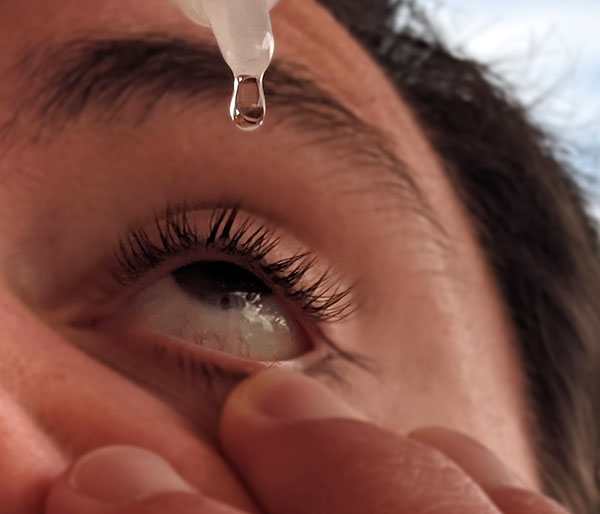Dry Eye Treatment
Dry eye is the most prevalent eye disease in the developed world. The sources of dry eye come from virtually every activity that we participate throughout the day, from long hours of screen use, outside pollutant exposure, indoor lighting/air conditioning/heating, pets, medications, and various systemic diseases such as thyroid and arthritis.
Dry eye can be managed through a variety of treatments ranging from less involved self-care to minor surgical procedures depending on the cause and severity of the disease. At your comprehensive eye exam, the doctors will diagnose and form a treatment plan customized to your level of need. We specialize in the care of dry eye and are utilizing the most state of the art advanced techniques and procedures to achieve the best level of outcome for our patients. It is important to understand that dry eye is a chronic disease that must be maintained regularly for the most success.

Signs and Symptoms of Dry Eye
Persistent dryness, scratchiness and a burning sensation on your eyes are common symptoms of dry eye syndrome. These symptoms alone may be enough for your optometrists to diagnose dry eye syndrome. Sometimes, he or she may want to measure the amount of tears in your eyes. A thin strip of filter paper placed at the edge of the eye, called a Schirmer test, is one way of measuring this.
Some people with dry eyes also experience a “foreign body sensation” – the feeling that something is in the eye. And it may seem odd, but sometimes dry eye syndrome can cause watery eyes, because the excessive dryness works to overstimulate production of the watery component of your eye’s tears.
What Causes Dry Eyes?
In dry eye syndrome, the tear glands that moisturize the eye don’t produce enough tears, or the tears have a chemical composition that causes them to evaporate too quickly.
Dry eye syndrome has several causes. It occurs:
- As a part of the natural aging process, especially among women over age 40.
- As a side effect of many medications, such as antihistamines, antidepressants, certain blood pressure medicines, Parkinson’s medications and birth control pills.
- Because you live in a dry, dusty or windy climate with low humidity.
Dry eye syndrome is more common in women, possibly due to hormone fluctuations. Recent research suggests that smoking, too, can increase your risk of dry eye syndrome. Dry eye has also been associated with incomplete lid closure following blepharoplasty – a popular cosmetic surgery to eliminate droopy eyelids.

What Is OptiLight by Lumenis & How Can It Manage Your Dry Eye?
Dry eye disease is a widespread and common issue for up to 49 million Americans. This chronic condition can have a significant impact on your quality of life, causing a foreign body sensation in your eyes, pain, blurry vision, and dry or watery eyes. Untreated, it can even lead to further eye health complications.
Despite these constant detrimental effects on quality of life, many dry eye sufferers are not aware that they’re suffering from dry eye disease or that real treatments exist. Instead, they just live with the discomfort.
At Hillcrest Vision, our number one priority when it comes to treating dry eyes is to help you reclaim comfortable and healthy vision. Through our use of modern dry eye solutions like the OptiLight program and cutting-edge diagnostic technology, our team of professionals is equipped with the necessary tools to accurately diagnose and treat your dry eyes. Our suite of diagnostic techniques and tools includes meibography, non-invasive tear breakup time, bulbar and limbal redness evaluation, tear meniscus height, Sodium Fluorescein staining, Lissamine Green staining, and dynamic gland expression.
We’re proud to offer OptiLight by Lumenis to our patients, specially designed for dry eye management.
